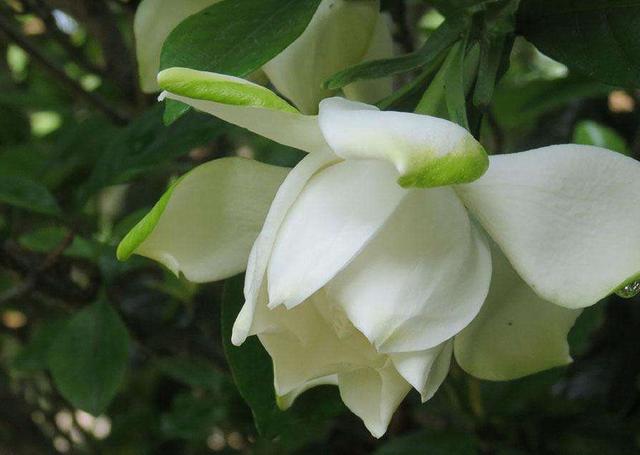Introduction to culture methods and growth habits of Baizi lotus
Because of its beautiful flower shape, Baizi lotus is very suitable for potted plants indoors. This is a very good decorative plant. People who like it can try to breed it. The following editors introduce the breeding methods and growth habits of Baizi lotus. I hope everyone likes it.

Breeding method of Baizi lotus
1. Soil: the cultivation soil of white lotus needs loose and fertile sandy loam with a pH value of 5.5-6.5. Potted soil can be prepared by mixing 2 parts of decomposed loam, 6 parts of humus soil and 2 parts of sand.
2, watering: Baizi lotus is a kind of moist plant, in planting, to keep the plant moist, watering thoroughly, but to avoid too much water, poor drainage, general indoor air humidity.
3, sunshine: Baizi lotus is a sunny plant, which can be in direct sunlight, but not too long. Suitable for bright, well-ventilated and no direct light in front of the window.
Temperature: Bai Zhi lotus sex is warm, not cold. Summer should be cool, the temperature should be 18 °22 °C, winter dormancy should be cold and dry environment, the temperature should not be lower than 5 °C.
5, fertilization: White lotus Xifei begins to apply fertilizer when the leaves are 5 to 6 centimeters long, usually apply rotten cake fertilizer and water every half a month, and change every 20 days after flowering.
6. Pests: in order to make lotus seeds grow vigorously and blossom early, diseases and insect pests should be controlled. The anther should be sprayed once a month, and the flowers should be sprayed at 9 a.m. and 4 p.m. On a sunny day.
7. Pruning: the growth rate of Baizi lotus is very fast, and the leaves are long and dense. When changing the flowerpot and soil, cut off the leaves, the roots and roots of the roots, as well as the roots of diseases and insect pests, so that the leaves become strong.
The growth habit of Baizi lotus
Baizi lotus likes warm, humid and sunny environments and needs cool summers and warm winters. Temperatures are between 20 °C and 25 °C in May and October, and between 5 °C and 12 °C in November and April. For example, if the soil moisture is high in winter and the temperature exceeds 25 °C, the stems and leaves grow strongly, hindering dormancy and directly affecting the normal flowering in leap years. Light also has a certain effect on growth and flowering. In summer, glare is avoided for a long time, and plenty of sunlight is needed for winter cultivation. The soil needs loose, fertile sandy loam with a pH value of 5.5 to 6.5.
Time: 2019-05-11 Click:
- Prev

How to raise gardenia in bloom
Improve scorpion flowers, do not do any strength, do not blossom, do this, flowers full of flowerpots, big and fragrant! Gardenia is a very popular flower plant. It can not only decorate the home, beautify the environment and add interest to life, but also exude a faint aroma, making people feel comfortable and annoying.
- Next

Green flowers, how to cultivate ivy in water
In the method of water-based cultivation, in order to remove the pot of cultivated plants, the soil balls were soaked and washed in a water container, so that the root soil and other substrates were completely removed from the roots, and all the roots were exposed and then put into the preparation. In nutrient solution (nutrient solution is sold on large flower farms
Related
- Fuxing push coffee new agricultural production and marketing class: lack of small-scale processing plants
- Jujube rice field leisure farm deep ploughing Yilan for five years to create a space for organic food and play
- Nongyu Farm-A trial of organic papaya for brave women with advanced technology
- Four points for attention in the prevention and control of diseases and insect pests of edible fungi
- How to add nutrient solution to Edible Fungi
- Is there any good way to control edible fungus mites?
- Open Inoculation Technology of Edible Fungi
- Is there any clever way to use fertilizer for edible fungus in winter?
- What agents are used to kill the pathogens of edible fungi in the mushroom shed?
- Rapid drying of Edible Fungi

